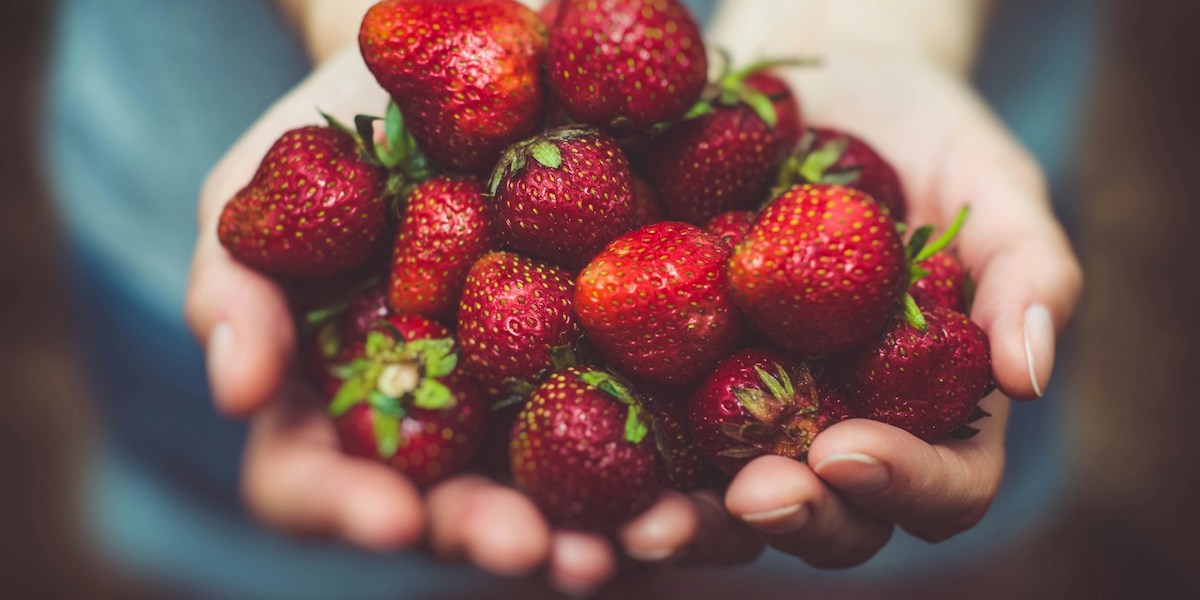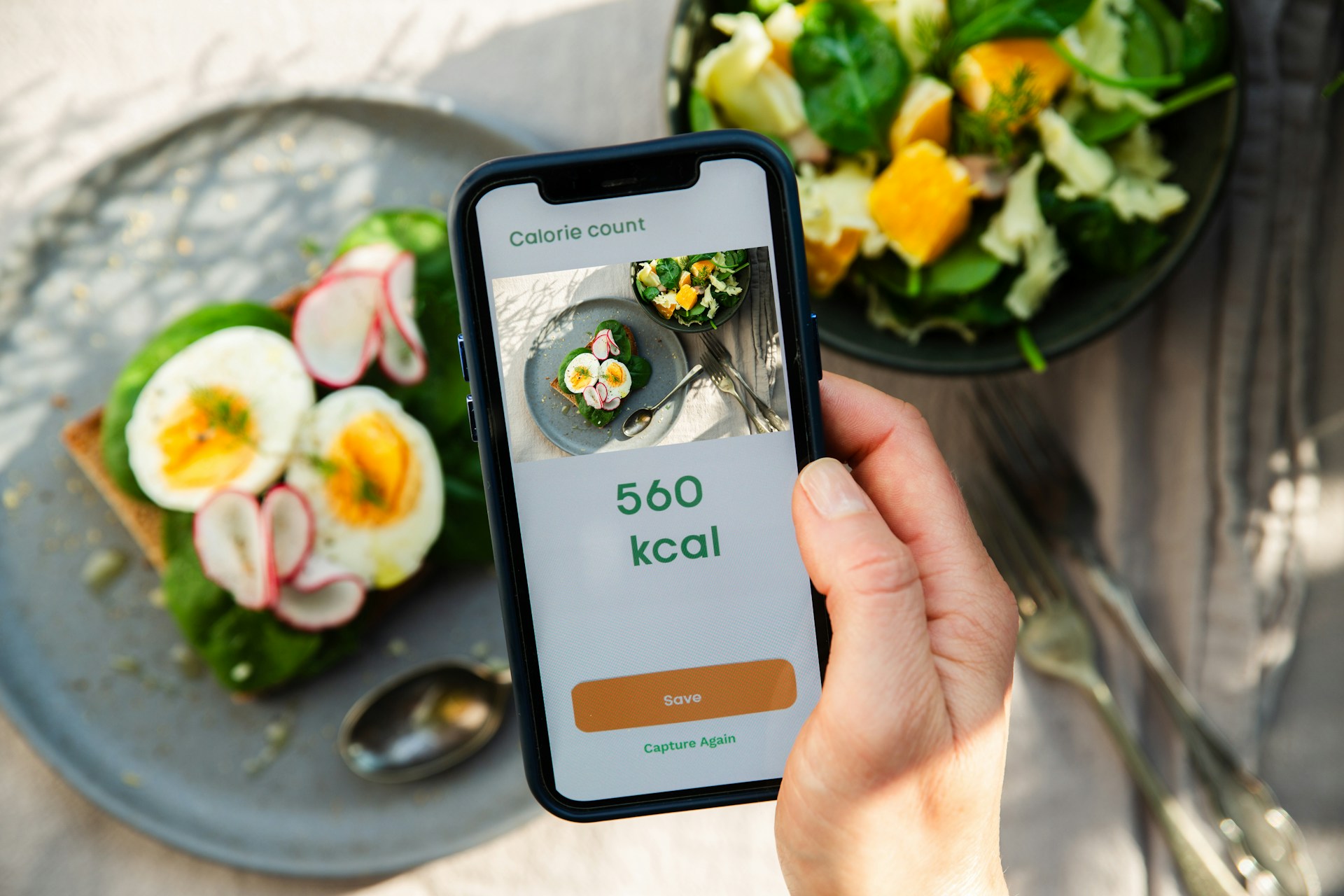Your appetite and nutrition needs can change across your menstrual cycle. Cycle syncing your diet to your unique rhythms may help you better fuel your body and feel your best.

Your appetite and nutrition needs can change across your menstrual cycle. Cycle syncing your diet to your unique rhythms may help you better fuel your body and feel your best.
Have you ever noticed that your appetite changes throughout the month, or your eating habits vary week to week? While there are many factors that impact how we feel and what we eat, hormones and the menstrual cycle are important parts of the equation.
Each hormone-driven phase of your cycle leaves you feeling different. Cycle syncing your diet may help you match your food choices to your body’s needs from phase to phase.
This cycle syncing food chart can help you make informed and intentional choices about your diet, all throughout your cycle.
What is cycle syncing?
Your menstrual cycle is governed by reproductive hormones like estrogen, progesterone, follicle-stimulating hormone (FSH), and luteinizing hormone (LH). Throughout your cycle, hormones rise and fall as they work to regulate and support functions in your body.
These natural fluctuations cause major shifts each cycle phase—including in the way you feel physically, your energy and fatigue levels, your mood and emotions, your cognition, and even your appetite and nutrition needs.
Cycle syncing tailors your lifestyle to your cycle. By giving careful attention to your body and adapting your activity to each phase, cycle syncing aims to harness the power of your cycle and improve overall health and well-being.
Are there benefits to cycle syncing your diet?
Cycle syncing is relatively new, and more research is needed to back up the benefits. Still, current research indicates that cycle phases influence mood, energy, and high-level athletic performance, and that diet may play a role in managing cyclic period symptoms.
In other words, harmonizing your lifestyle with your cycle could support well-being—and lots of peoples’ personal experiences point to the promise of cycle syncing.
Cycle syncing your diet is one way to get in tune with your body’s natural rhythms. Tailoring your nutrition to each menstrual phase may help reduce the effects of hormone fluctuations and support balance.
Cycle syncing your diet could:
- Deepen your connection with your body
- Reduce period pain and cramps
- Manage mood
- Lower stress
- Boost energy levels
- Improve digestive health
- Regulate gut health
- Improve sleep quality
You can also try cycle syncing your workouts, with exercises tailored to your period, follicular phase, and luteal phase. You can even cycle sync your skin care routine!
>>RELATED: What is the Link Between Diet and Fertility?
How to cycle sync your diet
If you’re interested in cycle syncing your diet, get to know your cycle first.
For that, consider using advanced, multi-hormone fertility kits like the Oova kit. Oova provides comprehensive, personalized hormone measurements to reliably track your cycle phases with lab-level accuracy.
Once you understand your unique hormones and cycle phases, it’s time to:
- Adjust your diet
- Monitor how you feel
- Take notes on factors like cycle day, cycle phase, daily diet, and symptoms
- Listen to your body and continue adjusting as needed
Remember that it’s important to consult with your healthcare providers about dietary changes. That way, you can be sure you’re staying safe and getting the nutrients you need as you build your cycle syncing food chart. Oova offers the option to share your cycle data and notes with your providers, making communication easy.
Cycle syncing food chart: Follicular phase
The follicular phase is the first phase of your menstrual cycle. During this phase, you get your period, and your ovaries grow an egg in preparation for ovulation.
To cycle sync your diet with your follicular phase, try replenishing your body with foods rich in iron and vitamin C (vitamin C helps with iron absorption):
- Red meat: beef, lamb
- Oily fish: sardines, tuna
- Poultry: chicken, turkey
- Legumes (great plant-based sources of iron!): beans, lentils, chickpeas
- Leafy greens: spinach, kale, swiss chard
- Tofu, tempeh
- Whole grains: quinoa, brown rice, oats
- Citrus fruits: oranges, grapefruits
- Berries: strawberries, blueberries, raspberries
- Nuts and seeds: pumpkin seeds, almonds, cashews
>>MORE: 7 High-Estrogen Foods to Balance Your Hormones Naturally
Cycle syncing food chart: Ovulatory phase
During the ovulatory phase, which typically happens around midway through your cycle, your ovaries release a mature egg. Ovulation marks the switch from the follicular to the luteal phase.
Have you ever noticed that you don’t feel as hungry around ovulation? This is common! Research shows that dietary intake may decrease during the late follicular and ovulatory phases. This could be because estrogen levels are highest during this part of your menstrual cycle, and estrogen appears to suppress appetite.
The ovulatory phase also comes with a burst of energy. To properly fuel your body, consider:
- Prioritizing nutrient-dense foods, to make up for eating less
- Limiting snack foods, to save your appetite for foods with more nutritional value
What’s in your cycle syncing food chart for ovulation?
Aim for foods high in protein and healthy fats, alongside fresh vegetables and complex carbohydrates (your body digests complex carbs more slowly, giving you maximum energy absorption):
- Lean meat: chicken, turkey
- High-protein fish: salmon, trout, mackerel
- Eggs
- Avocado
- Tofu, tempeh
- Legumes: chickpeas, lentils, beans
- Leafy greens: kale, spinach
- Whole grains: oats, quinoa, brown rice
- Cruciferous vegetables: broccoli, cauliflower, cabbage, bok choy
- Berries: strawberries, blueberries, raspberries
- Nuts and seeds: pumpkin seeds, almonds, walnuts
Cycle syncing food chart: Luteal phase
During the luteal phase, progesterone starts to rise in preparation for a potential pregnancy. Estrogen is also on the rise.
In the early to mid-luteal phase, you may feel hungrier and eat more. This change in appetite could be related to rising progesterone: the combination of progesterone and estrogen is thought to stimulate your appetite and trigger hunger.
Cycle syncing during your early-to-mid luteal phase calls for boosting your energy and keeping your body nourished with protein, complex carbs, and high-fiber carbs. Opt for:
- Lean meat: chicken, turkey
- Fish: trout, salmon, mackerel, shellfish
- Tofu, tempeh
- Legumes: chickpeas, lentils, beans
- Leafy greens: kale, spinach
- Whole grains: oats, quinoa, barley
- Fresh fruits: bananas, apples, berries
- Nuts and seeds: pumpkin seeds, almonds
Then, just before your next period and the beginning of a new cycle, estrogen and progesterone drop dramatically. This is part of what causes premenstrual and period symptoms.
Eating estrogen-friendly and progesterone-friendly foods may help counteract the effects of this steep hormone drop. Foods high in vitamin D, calcium, magnesium, and zinc may also help reduce premenstrual symptoms.
Your late-luteal cycle syncing food chart includes:
- Nuts and seeds: flax seeds, sesame seeds
- Vitamin-D fortified foods: juices, breakfast cereals, milk, dairy-free alternatives
- Vegetables: Brussels sprouts, cabbage, broccoli, peppers, carrots, zucchini
- Fresh fruits: peaches, apricots
- Soy: tofu, tempeh, soy milk, edamame
Cycle syncing food chart: The bottom line
Cycle syncing your diet can help you align your nutritional needs with your cycle phases, and may boost your energy, manage premenstrual and period symptoms, regulate gut health, and more.
Although more research is needed to understand the potential benefits of cycle syncing, making intentional, informed, and safe dietary choices can’t hurt. Track your cycle with a reliable and comprehensive hormone tracking tool like the Oova fertility kit to help you build your personalized cycle syncing food chart.
About the author

Sources
- Brown N, et al. (2023). Nutritional practices to manage menstrual cycle related symptoms: a systematic review.
- Carmichael M A, et al. (2021). The Impact of Menstrual Cycle Phase on Athletes’ Performance: A Narrative Review.
- Ems T, et al. (2023). Biochemistry, Iron Absorption.
- Handy A B, et al. (2022). Psychiatric Symptoms Across the Menstrual Cycle in Adult Women: A Comprehensive Review.
- Reed BG & Carr BR. (2018). The Normal Menstrual Cycle and the Control of Ovulation.
- Rogan MM & Black KE. (2023). Dietary energy intake across the menstrual cycle: a narrative review.
About the Oova Blog:
Our content is developed with a commitment to high editorial standards and reliability. We prioritize referencing reputable sources and sharing where our insights come from. The Oova Blog is intended for informational purposes only and is never a substitute for professional medical advice. Always consult a healthcare provider before making any health decisions.



